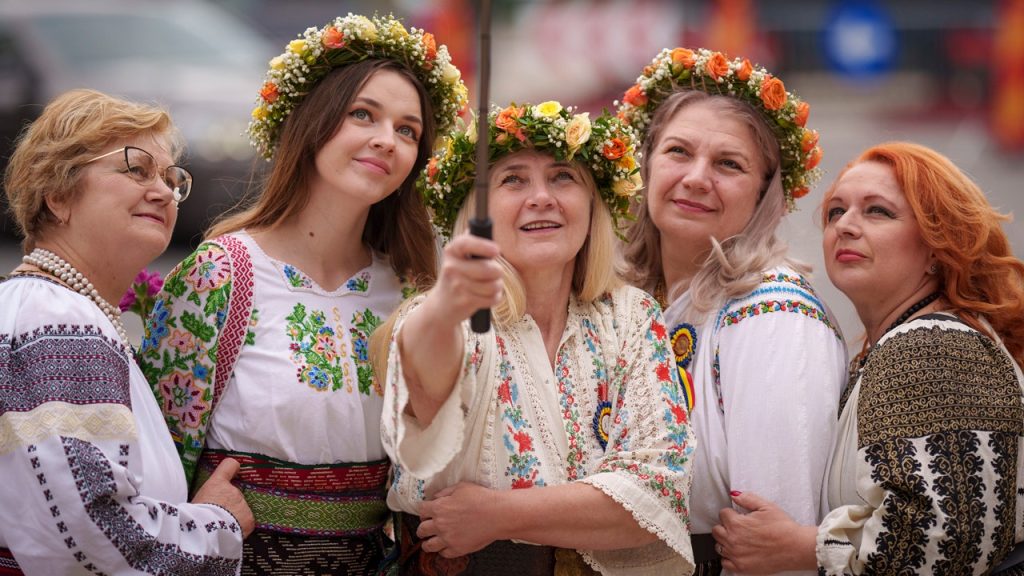Raluca Turcan, the Minister of Culture in Romania, has indicated that she will be requesting Louis Vuitton, a French luxury fashion house, to acknowledge that a traditional Romanian blouse served as direct inspiration for items in one of its 2024 collections. This specific type of blouse, known as an “IE,” features intricate embroidery and tassels and is regarded as a symbol of Romania’s rich folk culture. In 2022, garments with a similar style of embroidery were added to a UNESCO list of intangible cultural heritage. The campaign for Louis Vuitton to recognize Romanian heritage was initiated by the online community La Blouse Roumaine, which has advocated for fashion houses to credit collections that appropriate traditional clothing.
Turcan’s proposal for Louis Vuitton to acknowledge the cultural value of the traditional Romanian blouse stems from a desire to achieve international recognition for the priceless tradition it represents. The blouse, pronounced as “E-eh” in Romanian, is widely recognized for its exquisite embroidery and tassels, reflecting the country’s deep-rooted folk culture. The specific style of embroidery found on these garments was recently added to UNESCO’s list of intangible cultural heritage, underscoring their significance. The garments allegedly inspired by the Romanian blouse were part of Nicolas Ghesquiere’s Resort 2024 collection for Louis Vuitton, with many items in the collection carrying hefty price tags.
The campaign for Louis Vuitton to acknowledge Romanian heritage was launched by La Blouse Roumaine, an online community that has been advocating for fashion houses to credit traditional clothing collections. The founder of this community, Andreea Diana Tanasescu, emphasized the need to protect Romania’s intangible cultural heritage, highlighting the cultural significance of expressing identity through traditional garments like the Romanian blouse. Tanasescu underscored the importance of these items in preserving Romanian history. This outcry is not the first time Romania has demanded recognition for its cultural heritage, as in 2017, designer Tory Burch faced backlash for marketing a design inspired by a traditional Romanian-style coat as being from Africa, leading the brand to make revisions to its description.
The call for Louis Vuitton to acknowledge the influence of Romanian heritage on its 2024 collection reflects a broader trend of advocating for recognition of traditional cultural clothing and practices. The Romanian blouse, with its intricate embroidery and tassels, represents a significant aspect of the country’s rich folk culture and history. By appealing to international fashion houses like Louis Vuitton to acknowledge the origins and cultural value of traditional garments like the “IE,” Romania aims to safeguard its intangible cultural heritage and ensure that its unique identity is respected and celebrated in the global fashion industry. Tanasescu and the online community La Blouse Roumaine are leading the charge in promoting cultural awareness and appreciation for Romania’s traditional clothing, emphasizing the need to honor and preserve the country’s rich heritage for future generations.













